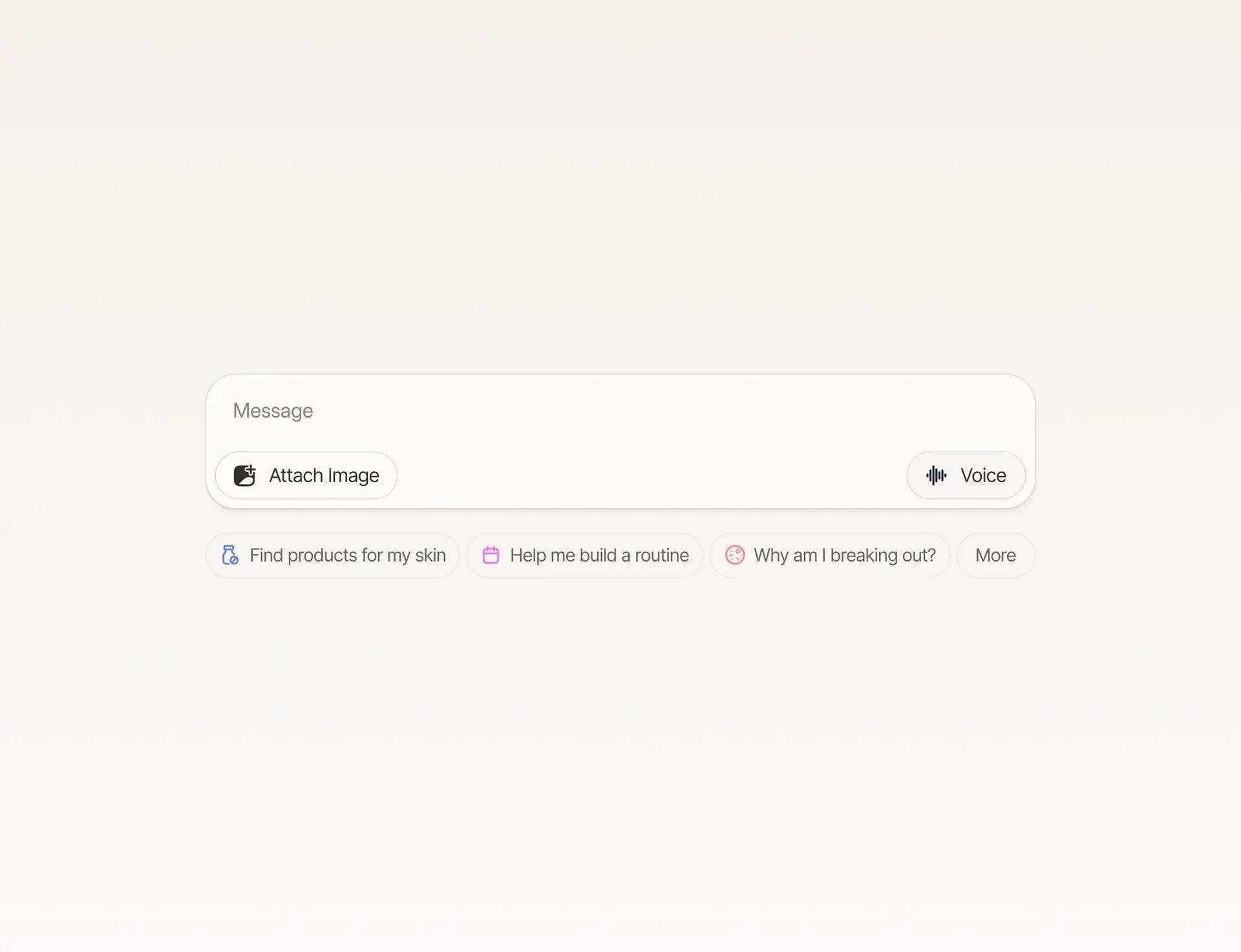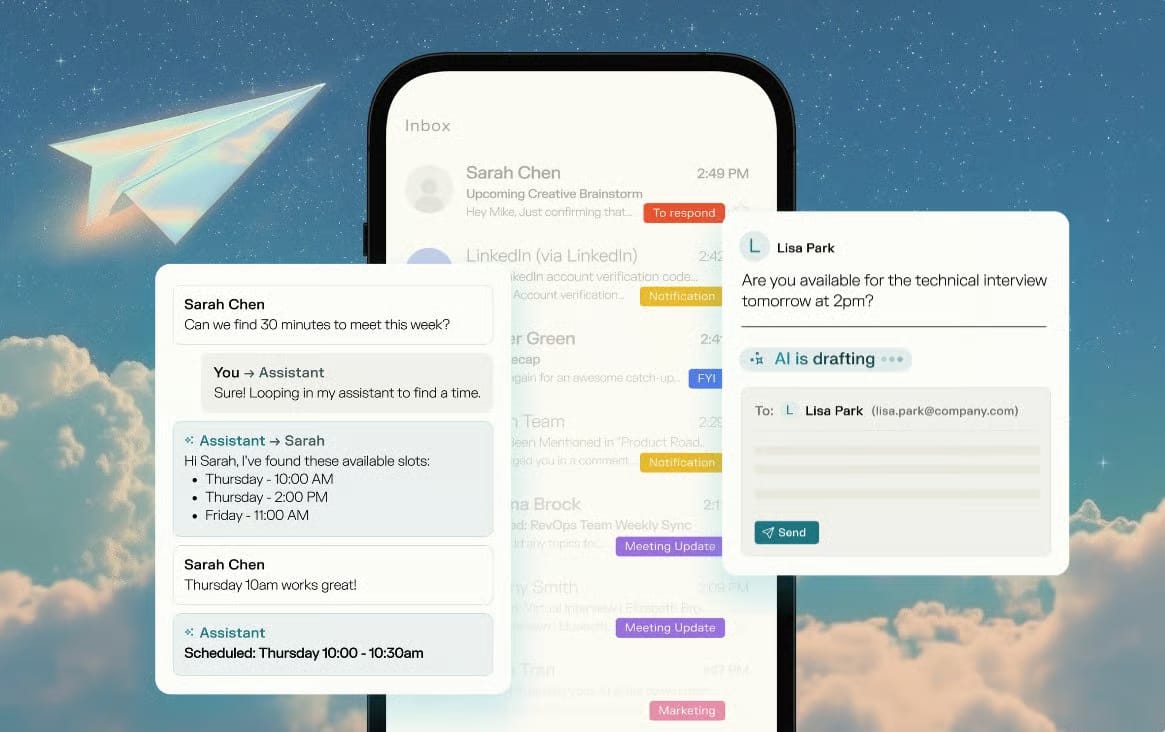- AtlasMoth Newsletter
- Posts
- Emerging Patterns Of AI-native Era
Emerging Patterns Of AI-native Era
No static flows, Yes dynamic collaboration

Startups who switch to Intercom can save up to $12,000/year
Startups who read beehiiv can receive a 90% discount on Intercom's AI-first customer service platform, plus Fin—the #1 AI agent for customer service—free for a full year.
That's like having a full-time human support agent at no cost.
What’s included?
6 Advanced Seats
Fin Copilot for free
300 Fin Resolutions per month
Who’s eligible?
Intercom’s program is for high-growth, high-potential companies that are:
Up to series A (including A)
Currently not an Intercom customer
Up to 15 employees
Hey, it’s Kushagra. Welcome to this week’s AtlasMoth drop.
UI frameworks, design patterns, and interaction models are evolving at an unprecedented rate.
What used to be a click-and-scroll web is now being reshaped by invisible actors, bots, crawlers, and AI systems that move data, trigger workflows, and summarize information before users ever touch it.
Nearly half of all web traffic now comes from non-human activity. AI platforms are seeing billions of visits a month. Search engines summarize instead of sending clicks.
The internet is being rewritten, and with it, the way we design products.
The next wave of software isn’t built for users to act. It’s built for software that acts with them.
Let’s break down three emerging patterns shaping this AI-native era and how you can design for it.
When it comes to designing AI-powered experiences, where’s your team focusing right now? |
|
💬 Building for people beyond borders? Book a call to explore more
Vibing While DesigningThis track gave me a serious boost—check out ‘Morning In Deira’ by Above & Beyond🎵 |
1. Nudges - Discovery Through Progressive Disclosure
When your product can do a hundred things but users only find ten, discovery becomes design.
Nudges are about surfacing AI capabilities through progressive disclosure. Instead of overwhelming users, they hint, guide, and reveal value at the right time.
Think of them as context-aware invitations, not banners or prompts, but subtle cues that say, “Here’s what’s possible, right now.”
Where to start:
In-app clues - contextual tips that surface where action matters.
In-product moments - AI features that reveal themselves through milestones or repeated behavior.
Feature education - introducing power features only when they’re relevant.
The key: relevance.
Nudges work when timing meets intent. Drop them too early, and they look like noise. Drop them right, and they feel like magic.

Beautiful UI to get us thinking about AI-native interfaces
2. Footprints - Building Trust Through Transparency
AI is doing invisible work, research, synthesis, reasoning & users rarely see the path behind the answer. That gap creates doubt.
Footprints solve that.
They show the AI’s thought process, step by step, without flooding the screen with complexity.
A good footprint system feels like watching the machine think out loud.
Patterns that work:
Show what the AI is planning, not every detail.
Cite key steps or sources to anchor trust.
Deliver the final output after the reasoning chain, not before it.
When users see how the system reached an answer, they don’t just accept it; they believe it.
Transparency is no longer a feature. It’s the UX trust infrastructure.

Discovery Through Progressive Disclosure
3. Human-in-the-Loop - Designing for Unpredictability
In traditional design, you know the flow. You define it.
In AI design, the flow changes mid-run.
AI agents may pause mid-task, realize they’re missing context, and reach back to the user for input.
That’s where human-in-the-loop design comes in, building systems that know when to interrupt and how to resume seamlessly.
Design for:
Graceful interruption: Don’t break the user’s mental model when AI asks for help.
Context switching: Show enough context for users to answer quickly.
Resumption: Let the AI pick up exactly where it left off.
These moments, part AI, part human judgment, define trust and control.
It’s not automation replacing humans. It’s a collaboration designed for flow.

Traditional UI patterns
You don’t need thousands of ads, just better ones.
Most platforms push you to make thousands of ads. Kojo helps you make better ones. We turn your social data into proven ideas, predict which will perform, and send them to real human creators in seconds. Less waste, more certainty, and ads that actually work.
4. The Design Layer of AI
Tools are already evolving to support these workflows, message-based UIs, streaming responses, contextual chat layers, and reasoning trails.
The shift is clear:
The old “dashboard-and-button” model is giving way to conversational, predictive, and agentic systems.
And that means the design language of SaaS is about to change.
Startups get Intercom 90% off and Fin AI agent free for 1 year
Join Intercom’s Startup Program to receive a 90% discount, plus Fin free for 1 year.
Get a direct line to your customers with the only complete AI-first customer service solution.
It’s like having a full-time human support agent free for an entire year.
30 Minutes Can Save YouGreat design doesn’t happen alone. One session can save you 10+ design iterations later. |
5. What This Means for Builders
Stop designing interfaces for static workflows.
Start designing environments for dynamic collaboration.
Ask yourself:
Where could a subtle nudge help users uncover hidden power?
Which AI flows need footprints to earn trust?
Where does your product need a human-in-the-loop to keep decisions smart and explainable?
The future of software isn’t just more capable. It’s more cooperative.
And the patterns we design today, nudges, footprints, and human loops, are just the first sketches of what comes next.
Let’s build the interfaces that teach machines how to work with us, not just for us.








Reply